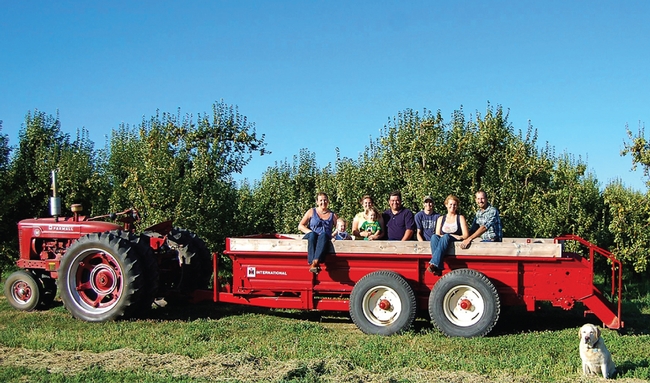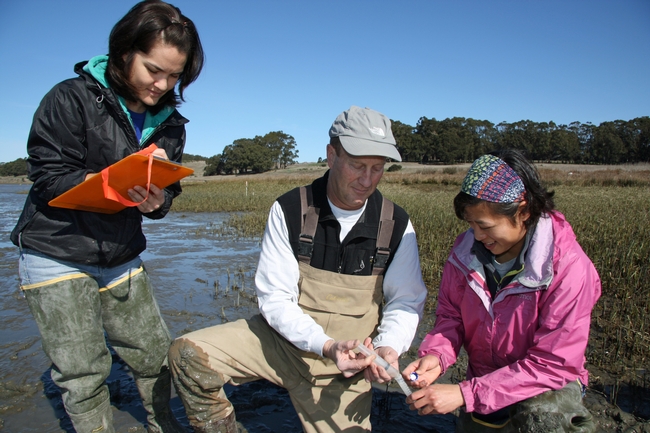Posts Tagged: Delta
Summer farm fun
This time of year, most farmers don't get much sleep. Tomatoes, pears and peaches often ripen in the Sacramento Valley faster than the harvest crews can pick them, even working 12-hour days. But this is also the season that some farmers are happy to show off their farms to visitors, inviting guests to enjoy the delightful flavors and beauty of the harvest in a pause from the bustle. UC Cooperative Extension hosts an online agritourism directory and calendar, www.calagtour.org, to help Californians find farms and ranches to visit. Here are a few upcoming opportunities for summer fun on California farms, pulled from the calendar:
- Plumas County Farm Crawl - Up the Feather River Canyon, on the eastern side of the Sierras, are the beautiful communities of Quincy and Indian Falls. Small-scale growers, members of Plumas Grown, offer tours and fresh snacks from their fields from 8 a.m. to 12 p.m. on Saturday August 6, 2016. Each farm will offer tours on the half hour (8:30, 9:30, 10;30 and 11:30). Participating farms include a school garden project, Five Foot Farm, Shoofly Farm and Sundberg Growers. Strawberries, tomatoes, garlic, carrots, huge heads of lettuce, hoop houses, and intense cultivation on small plots will be featured. Bring the kiddos, friends and family (no dogs please). All of these operations use sustainable growing practices and are happy to chat with you about why they love to grow good food. Admission by donation, no pre-registration required. Learn more: (707) 217-6415 or www.plumasgrown.com/
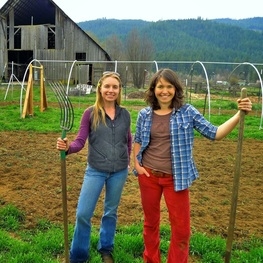 The farmers of Five Foot Farm.
The farmers of Five Foot Farm.
- Good Humus Peach Party (Yolo County) - Every year on the first Saturday in August, Jeff and Annie Main, owners of 20-acre Good Humus Produce, hold a celebration to give thanks for the year's fruit harvest. They invite you all to come out, see the farm, have a refreshment and enjoy all that Good Humus has to offer. This is a pot luck party; guests are asked to bring a dish to share and their own plates, silverware and cups. No cost, but donations are welcomed. The Mains will provide peach pies, peach ice cream, peach salsa, peach pizzas, and more. You are invited to come early and be part of the experience of making all the peachy fun food. Other activities include a treasure hunt, farm tours, stock tank dipping, music and neighborly chat. Saturday August 6, 1 p.m. - 11 p.m. Learn more
- Tomato Sauce Party at Eatwell Farm (Solano County) - It's time to join in on the tradition. Let's get canning! Tomato season is in full swing on the farm, and the plants are bursting with ripe and juicy tomatoes ready for picking. Join us as we harvest the bounty of the farm, toss it in a pot, and create delicious tomato sauce to savor the rest of the year. The produce is free, so bring as many jars as you can process over the two day event. The ticket price covers the cost of hosting the event and paying staff. Cost: adults $20, Children $5. August 6 - 7, 2016 Learn more and buy tickets here
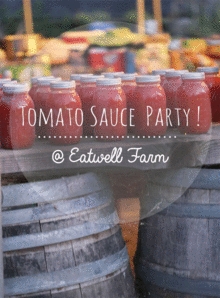
- Grape Days of Summer (Placer County) - Celebrate PlacerGROWN — local wine, local food, local agriculture. Take a self-guided tour of up to 20 wineries, taste foothill wines and enjoy a unique and educational experience at each stop on the Placer County Wine Trail. Saturday & Sunday, August 6 & 7, 11 a.m. to 5 p.m. WHERE: Placer County Wine Trail - Auburn, Lincoln, Loomis, Meadow Vista, Newcastle & Rocklin. Activities: Learn About Wine & Wine Making • Live Music at Some Locations • Food at Every Winery • Barrel Tastings • Vineyard Tours • Vertical Tastings • . . . and more! Tickets: Weekend Pass - $45.00, Sunday Only - $25.00/person, Designated Driver - $10.00/person website, more info
- Wine and Produce Passport Weekend (Sacramento River Delta) - Just minutes from Sacramento and Elk Grove, along scenic CA Hwy 160, Delta Farm and Winery Trail members will open their farms and wineries to the public. Farms are open from 9:00 a.m. to 5:00 p.m. and wineries from 11:00 a.m. to 5:00 p.m. During Passport Weekend, enjoy farm tours, local wine tastings, farm equipment displays, and contests. Fresh produce - including tomatoes, pears, melons, squash, stone fruits, sweet corn, zucchini, beans, eggs, and organic produce - will be readily available at many of the farms. Saturday and Sunday August 13 and 14. Tickets: adults $25 in advance, $35 week of purchase and are valid for both days. Kids under 21 are free. Tickets are available for purchase online at www.deltapassport2016.eventbrite.com. Each visitor over 21 will receive a wine glass at their first winery stop. sacriverdeltagrown.org/
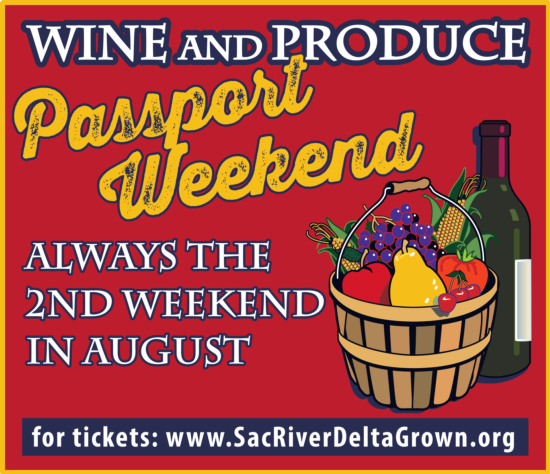
- Good Land Organics Coffee Tour (Santa Barbara County) - The tour will be lead by Good Land Organics owner and grower, Jay Ruskey. You will be welcomed with fresh coffee, freshly made juice and seasonal fruit. Jay will give an overview of the coffee research collaboration that has been conducted with the assistance of the University of California Small Farm Program. He will then lead you on a moderate level hike where Ruskey will explain the dynamics of new crop adaptation and integration of organic tree fruit agriculture. The walk will take you through the eclectic mix of exotic fruit varieties that grow on the farm. Each person will have an opportunity to taste a fresh picked coffee berry and discover the original flavors of the coffee bean, while discussing coffee cultivation and post harvest processing. On your return hike, there will be time for open discussion and for any further questions. At noon you have the option to enjoy your picnic lunch at our pond. August 13, 2016, 10:00 a.m. - 1:00 p.m. Cost: $50 per person. website, reservations
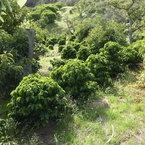 Coffee trees at the Good Land Organics farm.
Coffee trees at the Good Land Organics farm.
Learn about more farms, ranches and adventurous fun at www.calagtour.org.
California’s delta: On the front lines of the state’s water issues

California water: Few natural resources are as impressive, or as imperiled. Whether it's supplying 40 million domestic users, cooling the server farms of Silicon Valley, or irrigating the actual farms that supply half of the nation's produce, the importance of the state's aquifers and headwaters cannot be overstated. (Lake Tahoe, Yosemite Falls, and white-water rafting on the Kern and American Rivers feel like an embarrassment of riches.) While the potential for a multi-decade drought has grabbed headlines, however, California's water supply faces assault from a host of lesser-known factors including infrastructure failure, pollution, habitat loss, and plain old political chaos. This issue is strongly interdisciplinary, so it's only natural that UC Berkeley College of Natural Resources professors and students have been at the forefront of analyzing the problems and beginning the search for solutions. Several Berkeley professors have even served on the Delta Independent Science Board (DISB), a group of experts appointed by the state to oversee the quality of scientific research on California's contentious delta water issues.
Supply vs. demand
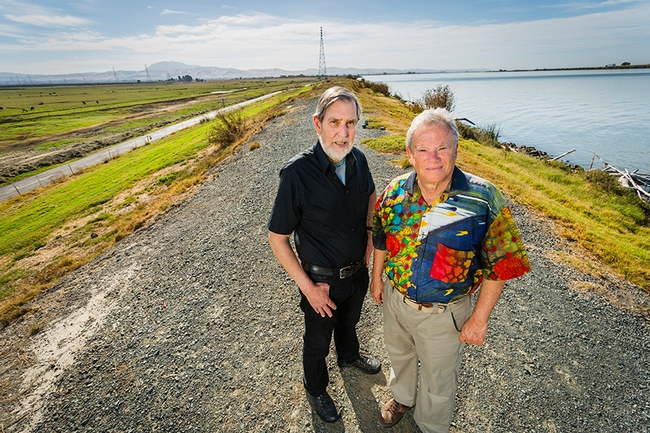
“Issue number one, one, and one is that a substantial portion of the acreage in agriculture is supported through groundwater overdraft, even in normal-rainfall years,” he says.
According to the U.S. Geological Survey, California's cities, factories, and farms soak up about 38 billion gallons every day. And while most people think of water in terms of rivers, lakes, and rain, over a third of the state's supply comes from aquifers deep underground. Only one in six Californians relies on groundwater alone to supply their domestic needs.
“We've been mining water to expand use beyond surface-water allocations,” says Norgaard. “Groundwater is close to gone, and agriculture is saying, ‘Where's our water, where's our water, where's our water?'”
Given that much of California is a desert — and that decades-long droughts are not impossible — intelligently managing California's limited supply is crucial. Gov. Jerry Brown recently ordered municipalities to cut home water usage by a whopping 25 percent, and California residents gave themselves a well-deserved pat on the back when usage for July 2015 surpassed that target by 6 percent. But there's one problem: Domestic use accounts for only 10 percent of California's total water consumption. Agricultural use, on the other hand, accounts for closer to 40 percent.
At first glance, that doesn't seem entirely inappropriate. Fruits, vegetables, and nuts, not to mention Northern California's incomparable wine and cheese — why shouldn't the farmers who feed half of the nation take half of the water that the state has to offer?
“Do you know what percent of the state's economy is agriculture?” asks Vincent Resh, a professor in the Department of Environmental Science, Policy, and Management (ESPM) and another DISB member. “Less than 2 percent.” It's a very vocal 2 percent, though, and there are volumes of case law — and a good amount of political muscle — dedicated to maintaining the status quo. “I'm very sympathetic toward the plight of farmers in the delta,” Resh continues. And farmworkers are the poorest of California's poor, with seasonal unemployment rates reaching upwards of 60 percent. “It's the human side of the story that I've become extremely sensitive about.”
Nonetheless, Resh recalls being on a delta tour that was packed with people who identified themselves as delta farmers.
“They were all talking about how this has been their family heritage for generations, but they were working as lawyers and bankers," Resh said. "They were really talking about a way of life that was long gone for them personally, but a memory that they were holding on to. Actually, this ‘way of life' idea is true of many of the contentious water issues in California. The controversies over who gets the water in the Klamath River in Northern California and Oregon are as much about way of life as they are about water for agriculture and salmon.”
A fragile water system
Nobody is suggesting an outright end to farming in California, but it's becoming increasingly clear that change is coming. One looming problem is the fragility of the levee system. Drive around Sacramento's rural environs and you'll realize that a lot of farmers actually do their work below sea level, with nothing but a hodgepodge system of peat dams and concrete rubble to restrain the brackish delta waters. Overactive beavers, like the one on the Jones Tract, are the least of the problem.
Like everyone else in California, the engineers who watch over the delta's levee system are at the mercy of probability, breathing a sigh of relief every day that goes by without the catastrophic shaking of the Big One.
“In any given year, there's not a large chance of a huge earthquake,” says David Sunding, UC Agriculture and Natural Resources Cooperative Extension specialist and chair of the UC Berkeley Department of Agricultural and Resource Economics. “But those risks accumulate over time. And by the time you look two decades into the future, there's a two-thirds chance of a very large quake that will affect the delta's water system.”
Even an apparent bounty — consecutive years of high rainfall — poses risks. River flows would rise along with reservoir levels, placing added stress on levees so that even a minor structural failure could set off a chain reaction, flooding fields and devastating crops.
“The current proposals for achieving reliable water supply and ecosystem health may be controversial, but it's clear that something has to be done — we can't have the status quo.”
— Vincent Resh
Inherent in either of these scenarios is the threat to drinking water. The delta houses the State Water Project, two massive pumps that send water to Southern California. If the levees are overtopped, the salt water of the bay will infiltrate the Sacramento and San Joaquin rivers, rendering the supply undrinkable.
“The worst-case scenario is three months without water,” Resh said. “And that's from Fremont down. Silicon Valley, Los Angeles, everything.”
Not just a human problem
Of course, farmers and thirsty urbanites aren't the only ones who need water. According to Berkeley Environmental Science, Policy, and Management associate professor Stephanie Carlson, “many of California's native fishes are declining, and the causes are rooted in habitat loss and the introduction of non-native fishes into California's waterways.” She emphasizes that our current multiyear drought may be the “nail in the coffin” for those populations already facing extinction.
Carlson's research focuses on understanding where and why fish populations are persisting. She found that several native fish, including commercially harvested salmon, live in “intermittent streams” — waterways that flow continuously in the wintertime but break into isolated pools during periods of low rainfall. As drought or human usage reduces stream flow, water quality deteriorates, resulting in higher temperatures and less oxygen. In pools that dry up completely, all fish die, of course, but some “refuge” pools persist through the summer — and these habitats do support fish.
Carlson's team has found that “the survival of imperiled salmon and trout varies among summers, but is highest after wet winters.” Following wet winters, streams flow longer into the summer, more pools persist, and water quality is improved. But, interestingly, “almost regardless of winter rainfall, most fish mortality is concentrated in late summer,” meaning that early, abundant fall rains may be as important as the previous winter's storms.
Carlson believes that these findings should guide management. Urban development in the Bay Area is spreading from flatlands to the hills.
“We need to focus our conservation efforts in those upper headwater streams — many of which are intermittent,” she says. Carlson also stresses that native fish have adapted to the seasonal shift from flowing streams to standing pools, while non-native fish have not — thus intermittent headwater streams may be important refuges for native fishes.
While diverting less water from streams during summer might help juvenile salmon, managing outcomes in the ocean is far more difficult. In 2007 and 2008, the West Coast Chinook salmon population collapsed, with the Sacramento River fall run reduced by 90 percent. Fisheries closed at a cost of millions of dollars, and the federal government declared a disaster. While the crisis was attributed to low ocean productivity beyond human control, human degradation of freshwater salmon habitats worsened the impact of poor ocean conditions.
Most salmon-breeding habitats in the Central Valley lie upstream of dams. Today, most Central Valley salmon are born in hatcheries; many circumnavigate the delta in trucks and are released into the San Francisco Bay. Because these fish don't swim through their natal rivers and the delta, they have no way to retrace their paths as adults. So they go everywhere, mingling with the broader gene pool. This “straying” erodes genetic differences among populations and increases the risk of collapse. It's possible that a more vibrant, genetically diverse salmon population could have better resisted the environmental disturbances of the mid-2000s.
“It's like having a broad portfolio of financial investments, as we've been taught with our 401(k)s,” Carlson says. “Maintaining multiple distinct populations with diverse traits and dynamics provides insurance against environmental change.”
—Excerpted from an article in the winter 2016 issue of Breakthroughs Magazine. Read the complete article.
Farmers invite visitors with new farm trail maps


The North Yuba Grown Farm Trail Map brochure encourages visitors to “Enjoy the Flavors of North Yuba … Some olive trees in the area are more than 100 years old, and are still producing excellent olive oils. The vines cultivated for wine are forced to dig deep for water and nutrients, resulting in smaller yields but expressing intense flavors.”
As Californians' interest in local food and farming increases, farmers in many parts of the state are finding ways to invite their urban and suburban neighbors out to the farms to taste, tour, play and learn. Three groups of growers, Capay Valley Grown in Yolo County, North Yuba Grown in Yuba and Butte, and Sacramento River Delta Grown in Sacramento County, have just published new farm trail maps that promote agritourism in their unique farming regions. The maps are part of a UC Small Farm Program project, funded by a CDFA Specialty Crop Block grant, called, “Building a Farm Trail: Developing effective agritourism associations to enhance rural tourism and promote specialty crops.”

The Sacramento River Delta group put on their Wine and Produce Passport Weekend in early August to debut their maps. North Yuba Grown is sponsoring the North Yuba Harvest Festival, to be held on September 27 and 28, and Capay Valley Grown is planning an Open Farm Day on October 5 this year. The groups of growers will have a chance to share their experiences with each other at a regional workshop in November, and with other California agritourism operators at a statewide agritourism summit to be held in April 2015.
The California Statewide Agritourism Summit, organized by the UC Small Farm Program as part of the same project, will bring together agritourism associations and others involved in California agritourism from throughout the state to learn from each other. The summit will include planning sessions for the continuation of statewide farm trail and agritourism association networking and skill-sharing. For more information, please click here or contact UC Small Farm Program Agritourism Coordinator Penny Leff, (530) 752-7779.
UC Davis scientists share perspectives on endangered species
You don't have to dig too deep into the scientific literature and popular media to find perspectives on threats posed to biodiversity in California and around the globe. Two UC Davis scientists in the Department of Wildlife, Fish and Conservation Biology have published fresh insights into endangered species in recent months.
Endangered Species Act sets a high standard
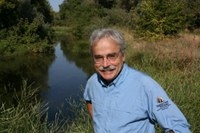
After passage of the ESA, Moyle and his graduate students initially searched for three species they suspected were in trouble: Modoc sucker, rough sculpin and bull trout. They found the sucker in trouble but easy to protect, the sculpin reasonably secure, and the bull trout near extinction in California. It has since vanished.
"As an untenured professor then, I thought it a bit risky to base a career on finding rare fish," Moyle wrote in an opinion piece published in The Sacramento Bee. “So I also undertook a study of Delta and longfin smelt, which at the time were two of the most abundant fish in the Sacramento–San Joaquin Delta.”
Moyle began a monthly sampling program to keep track of smelt populations and other fish in the Suisun Marsh. A few years later smelt counts dropped dramatically. The data eventually led to the U.S. Fish and Wildlife Service listing the Delta smelt as a “threatened” species under the ESA.
His ongoing research has recorded a statewide decline of most native fishes. With other researchers, Moyle has just completed detailed accounts of the biology and status of more than 60 native fishes — all potential candidates for ESA listings. This study will soon be released by the California Department of Fish and Wildlife.
“Most of our recommendations for preventing extinctions call for more and better water for the fish, or at least for protecting existing water they depend on,” Moyle said. “Funny how it almost always comes down to fish needing water.
“The Endangered Species Act sets a high standard in this regard because it not only forbids extinction; it also mandates recovery of each species to a more sustainable state.”
Moyle's opinion piece can be viewed in its entirety here.
Human longevity an indicator of endangered species

The researchers analyzed data from 100 countries, representing 87 percent of the world's population. They examined 15 social and ecological variables, such as tourism, per capita gross domestic product, water stress and political stability. The study showed that as human life expectancy increases, so does the percentage of invasive and endangered birds and mammals.
“It's not a random pattern,” Lotz said. “Out of all this data, that one factor — human life expectancy — was the determining factor for endangered and invasive birds and mammals.”
New Zealand, the United States and the Philippines had among the highest percentages of endangered and invasive birds. The study has been reported in the Los Angeles Times and other news media. Read more about the study's findings in our news release here. The journal article can be viewed here.
UC Davis scientists to discuss aquatic invasive species and research on endangered fish
A pair of leading UC Davis experts will provide a rare glimpse into efforts to protect California biodiversity at a public lecture May 10, 4–6 p.m., in the UC Davis Conference Center.
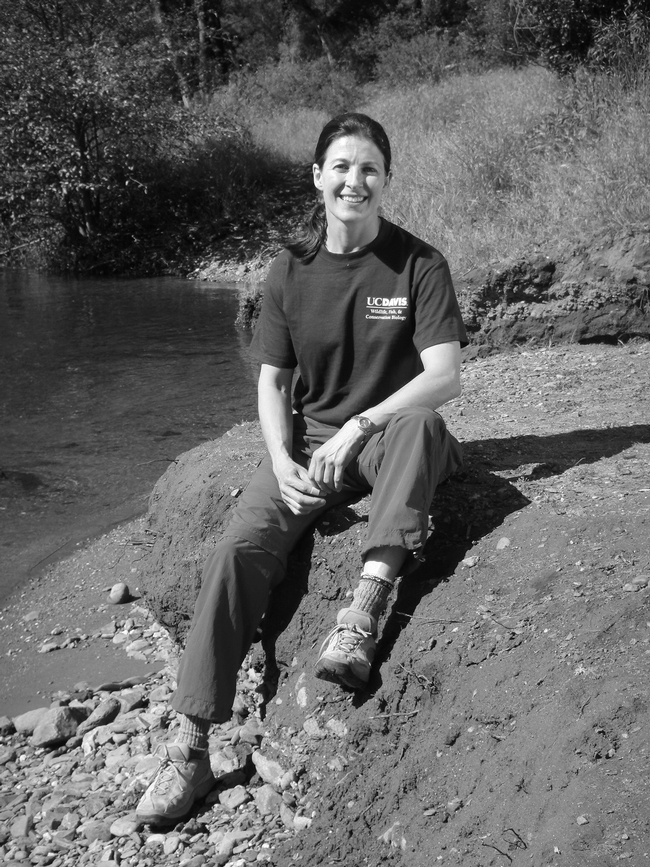
Their work is featured in the current issue of “CA&ES Outlook,” the magazine of the UC Davis College of Agricultural and Environmental Sciences. The magazine also examines the work of other UC Davis scientists and students working to conserve biodiversity in California.
The event concludes with a reception and an opportunity to visit with Thompson, Grosholz, CA&ES dean Neal Van Alfen, and other participants. The cost is $15 per person. To register, go to https://registration.ucdavis.edu.
For additional information about this event, please contact Carrie Cloud at (530) 204-7500 or crcloud@ucdavis.edu.




